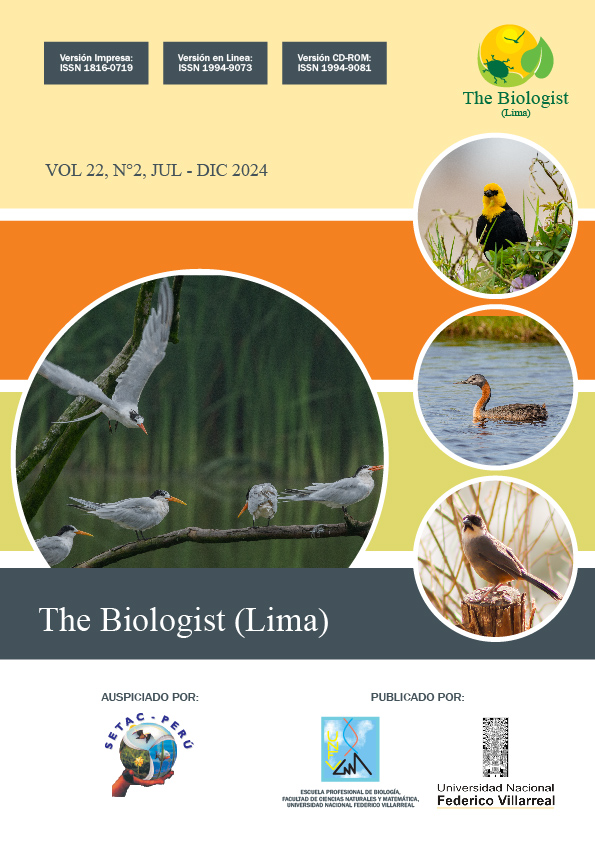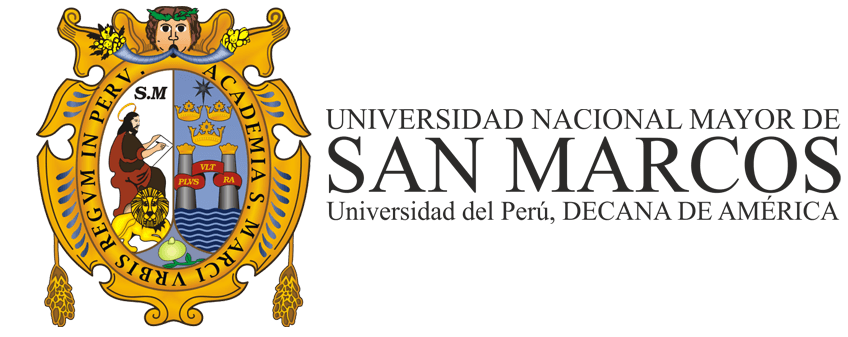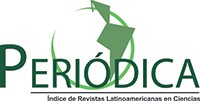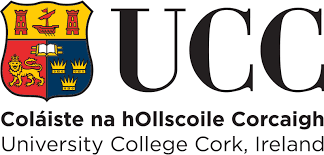Proceso de tratamiento por electrocoagulación y radiación solar visible de una solución acuosa modelo del colorante textil disperso “taicron-red”
Treatment process by electrocoagulation and visible solar radiation of an aqueous solution model of the dispersed textile dye "taicron-red"
DOI:
https://doi.org/10.62430/rtb20242221849Palabras clave:
electrocoagulación, radiación solar visible, solución acuosa, TratamientoResumen
La industria textil, una de las de mayor crecimiento, enfrenta grandes desafíos relacionados con la persistencia del color de los productos y el tratamiento de aguas residuales generadas durante su proceso. La decoloración de los colorantes utilizados, como el "Taicron Red", es un problema importante, ya que estos colorantes son químicamente estables y difíciles de eliminar. Por ello, es fundamental desarrollar métodos eficaces y sostenibles para su tratamiento. El objetivo de este estudio fue evaluar la eficiencia de un sistema de tratamiento para la remoción de colorante textil "Taicron Red" en soluciones modelo, utilizando procesos sostenibles alimentados por energía solar. Para ello, se diseñó y construyó una celda electrolítica alimentada por panel solar y un fotorreactor cuya bomba también es impulsada por energía solar. El tratamiento consistió en un proceso de electrocoagulación con ánodos de aluminio, aplicando una diferencia de potencial de 12 voltios durante 40 min, lo que redujo la Demanda Química de Oxígeno (DQO) de la solución de 5216,7 ppm a un valor inicial que permitió una segunda electrocoagulación. Posteriormente, la solución fue tratada en el fotorreactor durante 180 minutos utilizando 100 mg de Fe (II), 12 ml/L de H₂O₂, pH = 3 y TiO₂ a 100 ppm, logrando una remoción del 60% de la DQO (removiendo 3129,2 ppm) y del 90,68% del color. En un segundo tratamiento, incrementando la concentración de TiO₂ a 1000 ppm, se alcanzó una remoción del 84% de la DQO (removiendo 4381,4 ppm) y una remoción del color del 99,38%. Los resultados demostraron que el sistema propuesto es altamente eficiente para la remoción de colorante textil y DQO, alcanzando altos porcentajes de remoción en ambos casos, y que el uso de energía solar en conjunto con los procesos de electrocoagulación y fotocatálisis resulta ser una alternativa viable y sostenible para tratar aguas residuales en la industria textil.
Descargas
Citas
Alizadeh, M., Ghahramani, E., Zarrabi, M., & Hashemi, S. (2015). Efficient de-colorization of methylene blue by electro-coagulation method: Comparison of iron and aluminum electrode. Iranian Journal of Chemistry and Chemical Engineering, 34(1), 39–47.
Ambaye, T. G., & Hagos, K. (2020). Photocatalytic and biological oxidation treatment of real textile wastewater. Nanotechnology for Environmental Engineering, 5(3). https://doi.org/10.1007/s41204-020-00094-w.
Ahangarnokolaei, M. A., Attarian, P., Ayati, B., Ganjidoust, H., & Rizzo, L. (2021). Life cycle assessment of sequential and simultaneous combination of electrocoagulation and ozonation for textile wastewater treatment. Journal of Environmental Chemical Engineering, 9(5). https://doi.org/10.1016/j.jece.2021.106251
Asfaha, Y. G., Zewge, F., Yohannes, T., & Kebede, S. (2022). Application of hybrid electrocoagulation and electrooxidation process for treatment of wastewater from the cotton textile industry. Chemosphere, 302.
https://doi.org/10.1016/j.chemosphere.2022.134706
Abdul Rahman, N., Jose Jol, C., Albania Linus, A., Wan Borhan, W. W. S., Abdul Jalal, N. S., Baharudin, N., … Abang Abdul Hamid, D. F. A. (2023). Continuous electrocoagulation treatment system for partial desalination of tropical brackish peat water in Sarawak coastal peatlands. Science of the Total Environment, 880.
https://doi.org/10.1016/j.scitotenv.2023.163517
Bermeo, M. & Tinoco, O. (2016). Remoción de colorantes de efluente sintético de industria textil aplicando tecnología avanzada. Industrial Data, 19(2), 91. https://doi.org/10.15381/idata.v19i2.12844.
Bener, S., Bulca, Ö., Palas, B., Tekin, G., Atalay, S., & Ersöz, G. (2019). Electrocoagulation process for the treatment of real textile wastewater: Effect of operative conditions on the organic carbon removal and kinetic study. Process Safety and Environmental Protection, 129, 47–54. https://doi.org/10.1016/j.psep.2019.06.010
Bulca, Ö., Palas, B., Atalay, S., & Ersöz, G. (2021). Performance investigation of the hybrid methods of adsorption or catalytic wet air oxidation subsequent to electrocoagulation in treatment of real textile wastewater and kinetic modelling. Journal of Water Process Engineering, 40. https://doi.org/10.1016/j.jwpe.2020.101821
Bilińska, L., Blus, K., Gmurek, M., & Ledakowicz, S. (2019). Coupling of electrocoagulation and ozone treatment for textile wastewater reuse. Chemical Engineering Journal, 358, 992–1001. https://doi.org/10.1016/j.cej.2018.10.093
Carrera E, Gallissà, I. (2017) “Los retos sostenibilistas del sector textil”
Ganesh, R., Boardman, G. D., & Michelsen, D. (1994). Fate of azo dyes in sludges. Water Research, 28(6), 1367–1376. https://doi.org/10.1016/0043-1354(94)90303-4
GilPavas, E., Dobrosz-Gómez, I., & Gómez-García, M. Á. (2020). Efficient treatment for textile wastewater through sequential electrocoagulation, electrochemical oxidation and adsorption processes: Optimization and toxicity assessment. Journal of Electroanalytical Chemistry, 878. https://doi.org/10.1016/j.jelechem.2020.114578
Gümüş, D., & Akbal, F. (2011). Photocatalytic degradation of textile dye and wastewater. Water, Air, and Soil Pollution, 216(1–4), 117–124. https://doi.org/10.1007/s11270-010-0520-z
Kalia, S., Dalvi, V., Nair, V. K., Samuchiwal, S., & Malik, A. (2023). Hybrid electrocoagulation and laccase mediated treatment for efficient decolorization of effluent generated from textile industries. Environmental Research, 228. https://doi.org/10.1016/j.envres.2023.115868
Ledakowicz, S., Solecka, M., & Zylla, R. (2001). Biodegradation, decolourisation, and detoxification of textile wastewater enhanced by advanced oxidation processes. Journal of Biotechnology, 89(2–3), 175–184. https://doi.org/10.1016/S0168-1656(01)00296-6
Minero, C. (1995). A rigorous kinetic approach to model primary oxidative steps of photocatalytic degradations. Solar Energy Materials and Solar Cells, 38(1–4), 421–430. https://doi.org/10.1016/0927-0248(94)00234-7
Nakata, K., & Fujishima, A. (2012). TiO2 photocatalysis: Design and applications. Journal of Photochemistry and Photobiology C: Photochemistry Reviews. https://doi.org/10.1016/j.jphotochemrev.2012.06.001
Ribeiro, M. C. M., Starling, M. C. V. M., Leão, M. M. D., & de Amorim, C. C. (2017). Textile wastewater reuse after additional treatment by Fenton’s reagent. Environmental Science and Pollution Research, 24(7), 6165–6175. https://doi.org/10.1007/s11356-016-6921-9
Rodríguez, M., Sarria, V., Esplugas, S., & Pulgarin, C. (2002). Photo-fenton treatment of a biorecalcitrant wastewater generated in textile activities: Biodegradability of the photo-treated solution. Journal of Photochemistry and Photobiology A: Chemistry, 151(1–3), 129–135. https://doi.org/10.1016/S1010-6030(02)00148-X
Shams, M., Balouchi, H., Alidadi, H., Asadi, F., Goharshadi, E. K., Rezania, S., Rtimi, S., Anastopoulos, I., Bonyadi, Z., Mehranzamir, K., & Giannakoudakis, D. A. (2021). Coupling electrocoagulation and solar photocatalysis for electro- and photo-catalytic removal of carmoisine by Ag/graphitic carbon nitride: Optimization by process modeling and kinetic studies. Journal of Molecular Liquids, 340, 116917. https://doi.org/10.1016/j.molliq.2021.116917
Suárez-Escobar, A., Pataquiva-Mateus, A., & López-Vasquez, A. (2016). Electrocoagulation - Photocatalytic process for the treatment of lithographic wastewater. Optimization using response surface methodology (RSM) and kinetic study. Catalysis Today, 266, 120–125. https://doi.org/10.1016/j.cattod.2015.09.016
Tezcan Un, U., & Aytac, E. (2013). Electrocoagulation in a packed bed reactor-complete treatment of color and cod from real textile wastewater. Journal of Environmental Management, 123, 113–119. https://doi.org/10.1016/j.jenvman.2013.03.016
Torres, N. H., Souza, B. S., Ferreira, L. F. R., Lima, Á. S., dos Santos, G. N., & Cavalcanti, E. B. (2019). Real textile effluents treatment using coagulation/flocculation followed by electrochemical oxidation process and ecotoxicological assessment. Chemosphere, 236. https://doi.org/10.1016/j.chemosphere.2019.07.040
Wang, Y. (2000). Solar photocatalytic degradation of eight commercial dyes in TiO2 suspension. Chinese Journal of Catalysis, 21(4), 327–331.
Weber, E. J., & Adams, R. L. (1995). Chemical- and Sediment-Mediated Reduction of the Azo Dye Dispeise Blue 79. Environmental Science and Technology, 29(5), 1163–1170. https://doi.org/10.1021/es00005a005
Zazou, H., Afanga, H., Akhouairi, S., Ouchtak, H., Addi, A. A., Akbour, R. A., … Hamdani, M. (2019). Treatment of textile industry wastewater by electrocoagulation coupled with electrochemical advanced oxidation process. Journal of Water Process Engineering, 28, 214–221. https://doi.org/10.1016/j.jwpe.2019.02.006
Zhang, F., Zhao, J., Shen, T., Hidaka, H., Pelizzetti, E., & Serpone, N. (1998). TiO2-assisted photodegradation of dye pollutants II. Adsorption and degradation kinetics of eosin in TiO2 dispersions under visible light irradiation. Applied Catalysis B: Environmental, 15(1–2), 147–156. https://doi.org/10.1016/S0926-3373(97)00043-X
Publicado
Cómo citar
Número
Sección
Licencia

Esta obra está bajo una licencia internacional Creative Commons Atribución-NoComercial-SinDerivadas 4.0.
Objeto: El AUTOR-CEDENTE transfiere de manera TOTAL Y SIN LIMITACIÓN alguna al CESIONARIO (Revista The Biologist (Lima)) los derechos patrimoniales que le corresponden sobre sus obras por el tiempo que establezca la ley internacional. En virtud de lo anterior, se entiende que el CESIONARIO adquiere el derecho de reproducción en todas sus modalidades, incluso para inclusión audiovisual; el derecho de transformación o adaptación, comunicación pública, traducción, distribución y, en general, cualquier tipo de explotación que de las obras se pueda realizar por cualquier medio conocido o por conocer en el territorio nacional o internacional.
Remuneración: La cesión de los derechos patrimoniales de autor que mediante este contrato se hace será a título gratuito.
Condiciones y legitimidad de los derechos: El AUTOR-CEDENTE garantiza que es propietario integral de los derechos de explotación de la(s) obra(s) y en consecuencia garantiza que puede contratar y transferir los derechos aquí cedidos sin ningún tipo de limitación por no tener ningún tipo de gravamen, limitación o disposición. En todo caso, responderá por cualquier reclamo que en materia de derecho de autor se pueda presentar, exonerando de cualquier responsabilidad al CESIONARIO.
Licencia de acceso abierto: El AUTOR-CEDENTE autoriza que manuscrito publicado en la Revista Científica The Biologist (Lima) (versión Impresa ISSN 1816-0719, versión en línea ISSN 1994-9073) permanece disponible para su consulta pública en el sitio web http://revistas.unfv.edu.pe/index.php/rtb/index y en los diferentes sistemas de indexación y bases de datos en las que la revista tiene visibilidad, bajo la licencia Creative Commons, en la modalidad Reconocimiento-No comercial- Sin Trabajos derivados –aprobada en Perú, y por lo tanto son de acceso abierto. De ahí que los autores dan, sin derecho a retribución económica, a la Escuela Profesional de Biología, Facultad de Ciencias Naturales y Matemática de la Universidad Nacional Federico Villarreal (EPB - FCCNM - UNFV), los derechos de autor para la edición y reproducción a través de diferentes medios de difusión.









































